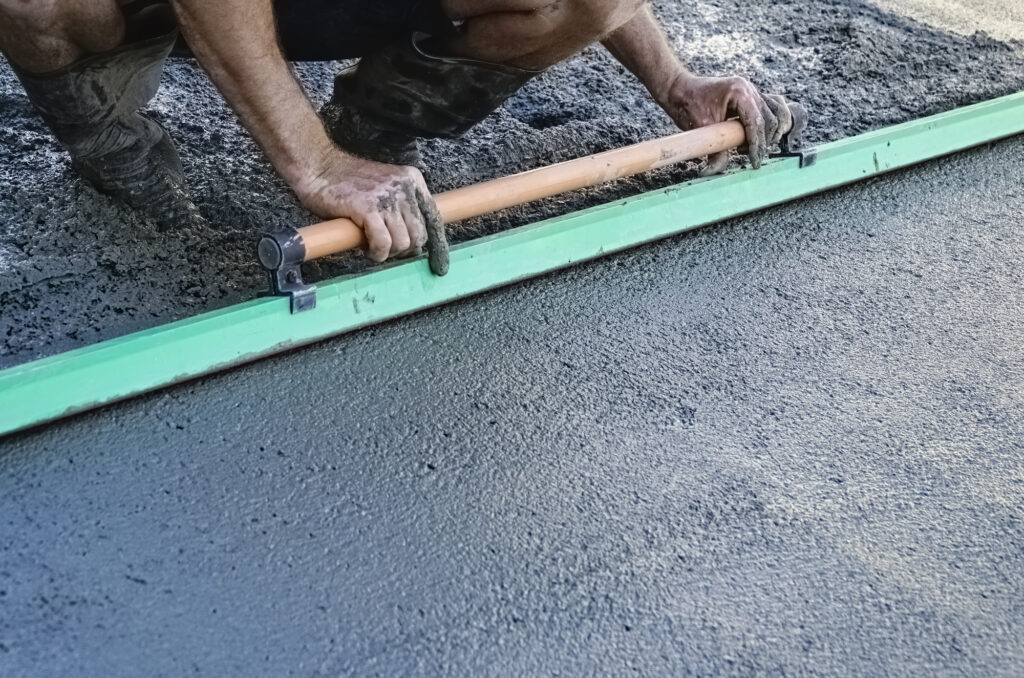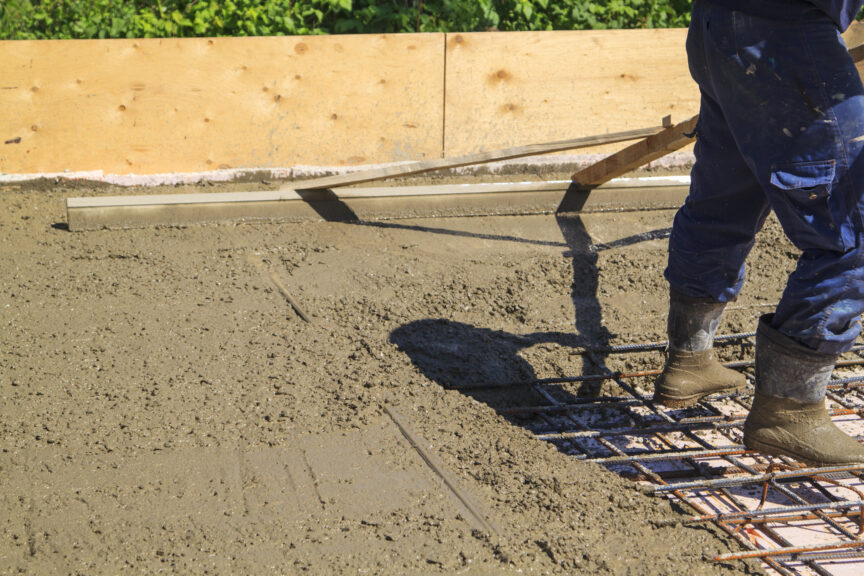Giovanni Valle is a licensed architect and LEED-accredited professional and is certified by the National Council of Architectural Registration Boards (NCARB). He is the author and managing editor of various digital publications, including BuilderSpace, Your Own Architect, and Interiors Place.
How a concrete foundation is poured can affect its strength and durability. If you’re taking on a DIY project or curious about how construction professionals do their job, you might wonder whether foundations should be poured all at once or in stages.
You don’t need to pour foundations in one sitting, but doing it all at once would give you the best results and may save you money. Foundations poured in stages should be pinned together to keep the sections aligned. Otherwise, the strength of the structure could be compromised.
Since the foundation is perhaps the most essential part of a structure, it should be poured correctly. In this article, I’ll explain why you should strive to pour your concrete foundation all at once and what you may do if that isn’t possible.
Do You Have To Pour a Foundation All at Once?
A single pour gives a continuous foundation structure without weak points. You may also save money by not having to return to the concrete pouring job later. Moreover, you wouldn’t require additional materials and labor to work on the cold joints.
However, a single-pour foundation may not be possible in certain situations.
For example, you may need to pour your foundation in sections if you work alone on a large project. Moreover, you may have to pour a foundation in stages if you run out of ready-mix concrete but you can’t get another delivery the same day.
If you can’t pour the foundation in one sitting, ensure the sections are tied together to stay aligned. In multiple pour foundations, cold joints form between the sections. These cold joints create weak points in the structure. Therefore, they should be strengthened to protect the foundation’s integrity.
How To Join Foundations Poured Separately
Leave the reinforcement bars (rebars) extending from the leading section of the foundation. Local building codes may have minimum length requirements for the extending rebars for a multiple-pour foundation. Therefore, ensure you check the codes.
Clean and roughen the edge of the leading section on which the new section will attach. You may also make a keyway joint in the leading pour to ensure that the sections stay together even if they come under different vertical forces.
Applying a bonding agent can also make the joint stronger.
Can You Pour a Foundation Yourself?
It takes skill and experience to pour a strong foundation, so you may want to let professionals handle the task for you. In a multiple-pour foundation, a skilled screw can also deliver better joints.
However, you may save money pouring the foundation yourself, especially on a small project.
What Needs To Be Done Before Pouring a Foundation?
Clear the area you want to lay the foundation of debris, grass, and other things you don’t need there. When the site is ready, determine the foundation’s dimensions and begin digging.
How deep you should dig the foundation depends on the type of structure you plan to build on it. A foundation should have a minimum depth of 1 foot (0.3 meters). That type of shallow foundation should only carry lightweight buildings.
For massive, complex buildings, a foundation’s depth may run into hundreds of feet. Apart from building size, soil quality also influences a foundation’s depth.
Ensure the forms are correctly installed and you have the right amount of concrete for the project. Begin to level the concrete as soon as the surface is clear of the water.
Keep the forms in place until the concrete has hardened enough. The foundation may crack or collapse if you withdraw the forms too soon.

How Thick Do You Pour a Foundation?
For a wall height of up to 8 feet (2.43 meters), the foundation wall should be at least 8 inches (20.32 centimeters) thick. For taller walls, the foundation should be at least 10 to 12 inches (25.4 to 30.48 centimeters). A patio concrete slab should be 4 inches (10.16 cm) thick at the minimum.
Apart from the wall height, a foundation wall’s thickness is also influenced by underground forces, such as the depth of soil pressing against the wall.
Additionally, concrete quality and local building codes may also influence foundation thickness. Foundation thickness is an essential factor to consider because it affects the strength and durability of the structure built on it.
What Happens if It Rains Right After Pouring Concrete?
The structure’s strength can be compromised if it rains right after pouring concrete on a foundation. Mixing concrete requires adding just the right amount of water. It means that rain falling too soon on the pour would add excess water to the mix and distort the required concrete-to-water ratio.
A freshly poured foundation requires at least four hours to harden enough to withstand rain.
Proper preparation and timing are necessary when pouring a foundation to ensure that rain doesn’t hit it prematurely. When pouring concrete in a rainy season, you may mitigate damage by covering the surface with plastic materials.
How Long Should You Water a Foundation?
Water helps the concrete curing process. Run water on the structure using a soaker hose for about 45 minutes. Hydrate the foundation several times daily for at least a week to achieve proper strength.
Water evaporates quickly in a hot season. Therefore, cover the concrete with moisture-retaining materials to allow it to take in enough water before it evaporates.
The longer you water concrete, the stronger it becomes. However, don’t water freshly poured concrete. Allow it several hours before running water on it for proper curing.
How Long Should a Foundation Sit Before Backfilling?
Concrete typically takes 28 days after pouring to reach its full strength. However, it would have achieved three-quarters of its full strength after a week if watered correctly.
Backfilling puts pressure on the walls. While waiting until the concrete hardens completely would be best, you may backfill the foundation after a week. You may partially backfill the foundation if the backfill load exerts great pressure on the structure.
How Long Can a Foundation Sit Before Building?
It takes about a month for concrete to harden fully. Allow at least a week after pouring a foundation before you start building on it. The structure would have attained sufficient strength to withstand pressure after that period.
For example, concrete would be strong enough to support a vehicle’s weight after a week.
Is It Better To Mix Your Own Concrete or Have It Delivered?
Mixing your own concrete is better if you’re working on a small project. Many companies that supply ready-mix concrete have minimum load requirements. As a result, mixing concrete yourself may be the only option, or you may face a significant surcharge for a short load delivery.
For large projects, purchasing premix concrete will be convenient and economical. Moreover, delivered concrete offers better batch consistency and quality than you may achieve alone.
Conclusion
You can pour a foundation all at once or in sections. A single pour will ensure a continuous foundation without cold joints.
Where a single pour isn’t possible, you can strengthen a multiple-pour foundation by ensuring the continuity of the reinforcement rods across the sections. Apply a cement bonding agent to strengthen the joints.
Consider seeking professional assistance if you doubt your ability to mix concrete correctly or pour a foundation.
Sources
- Concrete Network: Guide to Concrete Curing Time & Methods
- Fox Blocks: What is the Optimal Foundation Wall Thickness?
- Dynamic Concrete Pumping: 7 Most Common Concrete Mistakes
- Tristar-Concrete: 3 Types of Concrete Construction Joints
- Civiconcepts: How to Pour Concrete in Rain, Effect & Precautionary Measures
Share this Post

